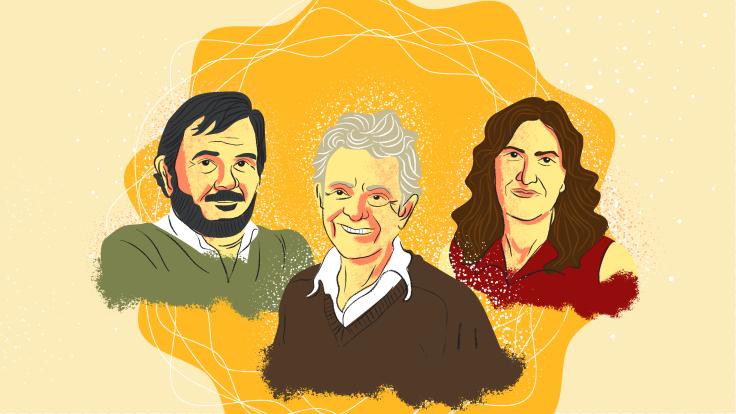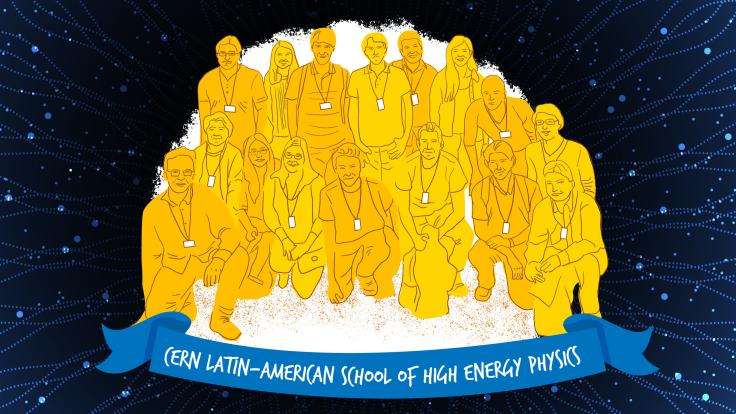In Argentina, far to the west of Buenos Aires, sits the world’s largest cosmic-ray detector: Pierre Auger Observatory. It’s made up of an array of 1,600 detector stations, each spaced about a mile apart. From the mountains that separate the country from neighboring Chile, you can see a portion of its grid of detector tanks, which spread across an expanse of the pampas the size of Yosemite National Park.
The collaboration—now made up of about 400 scientists—turned on the first of its detectors in 2004. It has been using the full array to collect data for particle physics and astrophysics research since 2008.
Today, they’re making an initial selection of that data available to scientists, along with all the information they’ll need to use it.
Pierre Auger scientists have released data before, both in their open-access scientific publications and for the purposes of education and outreach on their website. But this is the first time they’ve released such detailed information about each cosmic-ray event. The release includes 10% of their dataset through 2018—a collection of every 10th recorded event.
“It’s oriented to the scientists,” says physicist Xavier Bertou, who has conducted research at Pierre Auger since he wrote his PhD thesis at the observatory 25 years ago. “The idea is really to have people who have never used Auger data to be able to use them.”
Bertou and colleague Piera Ghia, who has worked on Pierre Auger for 20 years, co-led the group that spent part of the past year and a half preparing the data for release.
To Ghia, the data—along with the publications produced and young researchers trained—make up the lasting legacy of Pierre Auger Observatory. “The fact that we are doing this [public release of the data] makes me euphoric,” she says. “I want to share it with the world.”
The data tell the stories of more than 22,000 cosmic-ray events. Each one begins high above the Pierre Auger array, where a flying space particle encounters the sudden resistance of Earth’s atmosphere. The friction of the particle’s flight kicks off showers of secondary particles, which multiply and crash into detector after detector across the plain. Working together as one giant detector, hundreds of individual tanks and telescopes capture the signals of each particle and its compatriots as they flash and eventually fizzle.
The events are less understood than those studied in controlled settings like those at the Large Hadron Collider, Bertou says. At the LHC, particle events happen in a vacuum in the heart of the detector. At Pierre Auger, they develop across the sky, close to 10 miles (15 kilometers) above. LHC scientists create and understand their particle beams, Ghia says, whereas “we are really investigating in the dark.”
Some of the particles Auger has seen emerge from that dark, though, have been millions of times more energetic than anything physicists can make in a lab. “I would like people to see in cosmic rays what Xavier and I see, which is fascination,” Ghia says.
Bertou imagines scientists may want to compare Pierre Auger cosmic-ray data with data recorded by other detectors, such as the Telescope Array—built on a dry lake bed in Utah—or even the Ice Cube array—frozen in the ice in Antarctica. He says machine-learning experts have expressed interest in the Pierre Auger dataset as well. “I know quite a few who are eager to apply their techniques to different scientific areas than the ones they’re trained in.”
This should be the first of more such detailed releases, Bertou says. So far the collaboration has prepared 200 megabytes of data—a little less than you’d use to stream a movie on Netflix. That covers the events, along with details such as when exactly they happened, what direction they came from, whether a fluorescence detector caught a glimpse of their ultraviolet glow, what scientists should know about the detectors that captured the signals, and how Pierre Auger scientists selected, connected and analyzed them. The release includes a sky map and a tool scientists can use to examine each individual cosmic-ray event.
Working on the data release—“it’s probably one of the best things I’ve done at Auger in my career,” Bertou says.
It’s been especially rewarding to be able to work on it while confined at home during the coronavirus pandemic, Ghia says.
“This year has been painful for every one of us,” she says. “Every two weeks, having this phone call [with the data release group] and the work, it was something that put me in a good humor. It was a positive thing, something we were building together.”













